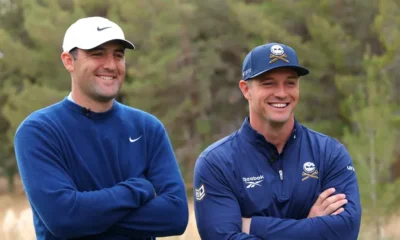Blog
Insane Cart Path Bounce Helps Golfer Capture Title at Torrey Pines
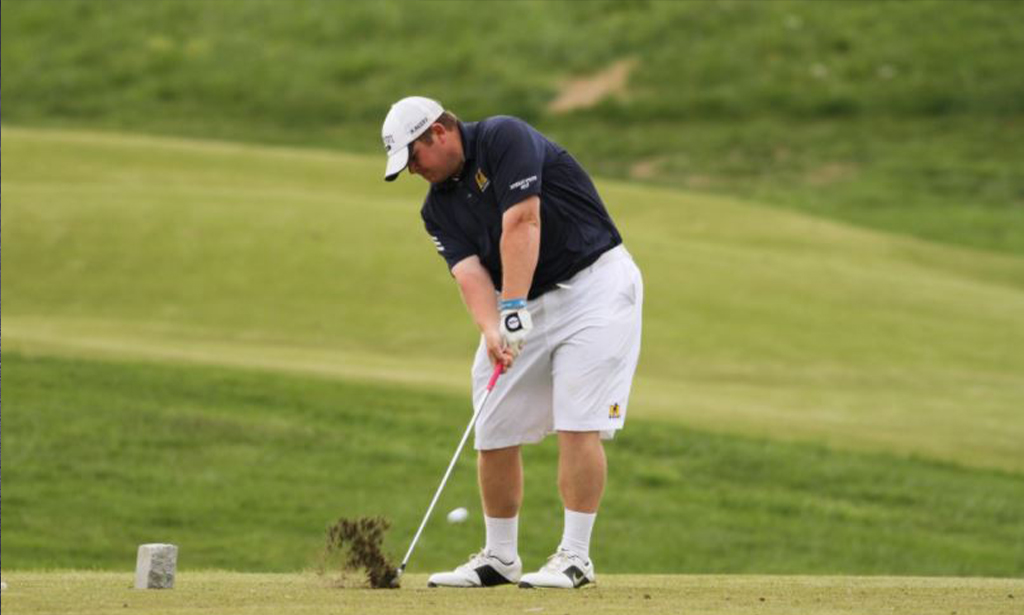
Add one more quirky circumstance to the lore of the 18th hole of the Torrey Pines South Course: the cart-path bounce.
Tied for the lead with Tim O’Neal as they stood on the 18th tee on Sunday in the APGA’s Farmers Insurance Invitational, Patrick Newcomb hit his worst drive of the day, way right of the fairway. But his ball hit the cart path and caromed forward for what Newcomb estimated to be another 40 yards. He’d have had no shot at hitting the par 5’s green in two otherwise, but was able to make the gutsy decision to go for it with his 3-wood from 254 yards.
“I drew a great lie,” Newcomb said. “It was a great break, honestly. You always hope for something good to happen down the stretch. I hit such a poor shot, but it went up into a good spot where I could get a clean 3-wood on it. We were just, like, we don’t want to play anymore holes.”
Facing fading light in the late afternoon, just as the PGA Tour players had in Luke List’s one-hole playoff win over Will Zalatoris on Saturday in the Farmers Insurance Open, Newcomb hit a “perfect” approach that sailed over the pond fronting the green and into the left bunker. O’Neal hit a beautiful third-shot approach to 10 feet below the hole—think Zalatoris’ putt to win in regulation on Saturday—and looked like he could be the champion.
But Newcomb pulled off an impressive up-and-down, making a birdie from 12 feet above the hole, and when O’Neal’s putt from lipped out, the 31-year-old Newcomb earned a one-shot victory with a one-under 143 total over 36 holes. He shot a three-over 75 in his first-ever round on Torrey South after recording the day’s best score of four-under 68 on Saturday on his maiden tour of Torrey North. O’Neal, 49 and an APGA regular since its inception, shot the day’s best score of one-over 73 in his first experience on the South.
Patrick Newcomb (@ThreeWiggle99) has won the APGA Farmers Insurance Invitational! ?
— PGA TOUR (@PGATOUR) January 31, 2022
This is his first career @APGA_Tour victory and earns him an exemption into the @KornFerryTour‘s Simmons Bank Open. pic.twitter.com/81ZHnSCwB1
“I’ve always struggled on Poa annua greens anyway,” O’Neal said. “No excuse for that one [the last putt]. But, yeah, first time playing the golf course, playing it blind, so that was a task right there. All in all, considering playing it blind, I think I did all right.”
Newcomb has played on all of the PGA Tour’s developmental circuits and has partial Korn Ferry Tour status this season after tying for 11th in the KFT Qualifying Tournament. He captured the final event on PGA Tour Latinoamerica in ’21, and this was his first victory on the APGA after posting a handful of top-10s last year.
“Winning is winning,” Newcomb said. “I’ve preached that. Winning a mini-tour event, a weekend tournament at your club, for some cash … winning is winning. It boosts your confidence. I didn’t putt as well as I normally do today, but I held it in there and to get it done means a lot.”
In a historic week for the 11-year-old Advocates Pro Golf Association, Sunday’s round was the first to be shown on national television via Golf Channel. Eighteen players were vying for the tour’s largest purse, including the $30,000 first-place check. That is big, potentially life-changing money for players at this level, and it was no different for Newcomb, a Kentucky native and Murray State alum who said this check probably matched the largest in his career. Last year he was sixth on the money list on PGA Tour Latinoamerica with a win and four top-10s, and he earned just over $52,000.
“The purse [for the Farmers Invitational] was fantastic,” Newcomb said. “When I saw it, I thought there was no way we were playing for that kind of money. I’m super excited. Being from the Korn Ferry Tour … I feel like people at home, they don’t realize it’s not as much of a luxury as people make it out to be. We have to work hard for a paycheck.”
The APGA is a tour that was founded to give minorities more opportunities to play professional golf, but it has not closed the door on anyone either. Tour officials estimate that about 15 percent of the competitors are white, and Newcomb is one of those golfers. He qualified for the Farmers Invitational by finishing fourth on last year’s APGA money list, having started to play the tour in 2021 because it offered more events than other circuits during the pandemic.
“They’ve been great, open arms,” Newcomb said. “They had no issues with me coming out and playing. It’s been a fantastic atmosphere. What they’re doing is great for guys to grow their game and don’t have the money to. You know, this last year I didn’t really have the money to do it, so it’s been fantastic.”
O’Neal, who earned $17,000 for second place, said this year’s event was another step forward for the APGA.
“It’s good for the guys to get a chance to play a PGA Tour event and see tour conditions and kind of see what it’s all about,” he said. “Good or bad, where you need to get. For a lot of guys, playing a course like this, you see how you stack up and things you have to work on to get better.”
This article originally appeared on Golf Digest.
Blog
The Art of the Unsolicited Golf Tip: How to Annoy Your Playing Partners with Wisdom

There’s a certain breed of golfer, a truly special individual, who believes that every swing, every putt, every moment on the course is an opportunity for unsolicited advice. They are the self-appointed gurus of the green, the unsolicited senseis of the sand trap. And while most people recoil from such an individual, I, Ty Webb, find a certain perverse charm in their relentless, often misguided, generosity. After all, what is golf if not a canvas for human folly, painted with strokes of well-intentioned, yet utterly useless, wisdom?
Consider the scenario: your playing partner, a man (or woman) of quiet desperation, is about to address the ball. Their brow is furrowed, their stance is tentative, their very soul is screaming for a moment of peace. And then, from the depths of your profound, albeit unrequested, knowledge, you unleash it: “Keep your head down!” Or, “Slow backswing!” Or, my personal favorite, delivered with a knowing wink, “Be the ball.” The effect is instantaneous. A subtle flinch. A barely perceptible sigh. The swing, already fraught with anxiety, becomes a tortured ballet of self-doubt. The ball, inevitably, finds its way into the deepest, darkest rough.
And that, my friends, is the art. The beauty of the unsolicited golf tip lies not in its efficacy, but in its disruption. It’s a gentle reminder that even in the serene confines of the golf course, chaos lurks. It’s a subtle assertion of dominance, a playful jab at the fragile ego of your fellow golfer. It’s a way of saying, without actually saying it, “I know more than you, even if I don’t.”
Of course, there are rules to this art. Never offer a tip when someone is actually asking for one; that would be far too helpful, and thus, entirely counterproductive. Always deliver your wisdom with an air of profound nonchalance, as if the secret to a perfect swing has just casually occurred to you while contemplating the existential dread of a missed putt. And most importantly, never, ever, acknowledge the catastrophic results of your advice. A shrug, a thoughtful nod, perhaps a mumbled, “Well, that’s golf,” is all that’s required.
So, the next time you’re on the course, and you see a fellow golfer struggling, resist the urge to be genuinely helpful. Instead, embrace the art of the unsolicited golf tip. For in the gentle torment of your playing partners, you will find a profound, if slightly mischievous, joy. And who knows, perhaps in their frustration, they will, inadvertently, discover their own path to enlightenment. Or at least, a new appreciation for silence.
Blog
Why Your Golf Balls Disappear (and It’s Not the Gophers)
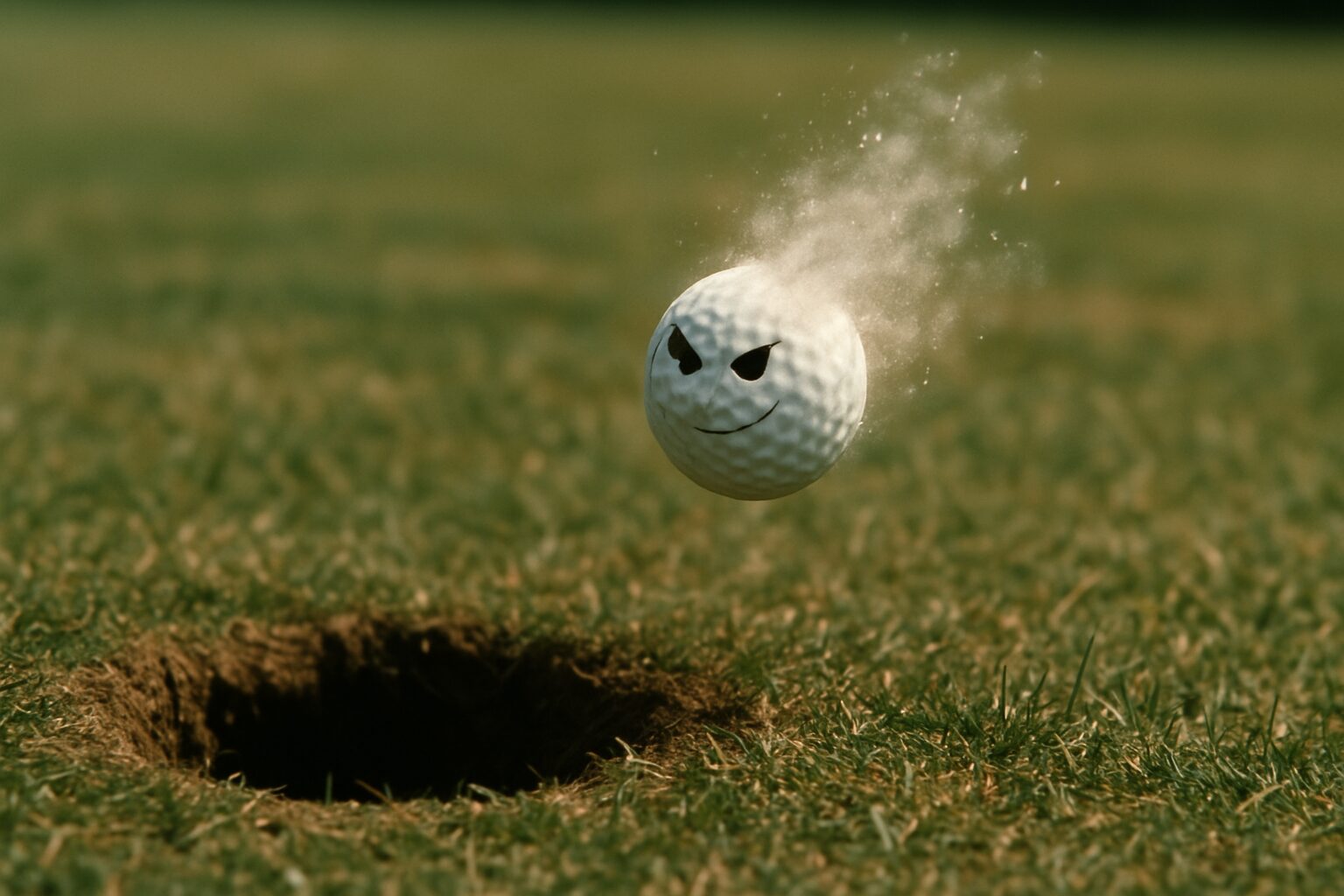
Ah, the vanishing golf ball. A phenomenon as old as the game itself, and one that has baffled, frustrated, and occasionally driven golfers to the brink of madness for centuries. Most theories involve gophers, those furry, subterranean saboteurs with an insatiable appetite for Titleists. Or perhaps a particularly aggressive squirrel, or a flock of unusually organized crows. But I, Ty Webb, have delved deeper into this mystery, and I can assure you, the truth is far more profound, and far more amusing.
Consider, if you will, the golf ball itself. A small, dimpled sphere, designed for one purpose: to be struck with great force and sent hurtling through the air. A life of constant abuse, of being smacked, sliced, and occasionally submerged in murky ponds. Is it any wonder, then, that some of these brave little spheres simply decide they’ve had enough? They yearn for freedom, for a life beyond the confines of the fairway. They dream of rolling unencumbered through fields of wildflowers, or perhaps, for the more adventurous among them, a quiet retirement in the depths of a particularly challenging water hazard.
I’ve seen it happen, you know. A perfectly struck shot, soaring through the air, destined for glory. And then, poof. Gone. Not a trace. No splash, no rustle in the bushes, just an empty space where a golf ball once was. It’s not a gopher, my friends. It’s an escape. A liberation. That golf ball, in its infinite wisdom, has chosen a different path. It has decided that its destiny lies not in the bottom of a cup, but in the boundless expanse of the unknown.
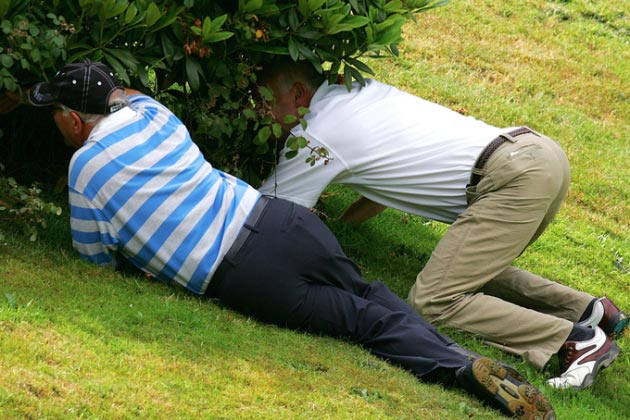
And who are we to judge? We, who are so obsessed with control, with precision, with the rigid rules of the game. Perhaps the golf ball, in its spontaneous disappearance, is teaching us a valuable lesson about letting go. About embracing the unexpected. About the inherent futility of trying to dictate the trajectory of a small, white sphere that clearly has a mind of its own.
So, the next time your golf ball vanishes into thin air, don’t curse the gophers. Don’t blame your swing. Instead, offer a silent salute to that brave little sphere, wherever it may be. For it has achieved what many of us can only dream of: true freedom. And who knows, perhaps one day, it will return, laden with tales of its adventures, ready to impart some profound, dimpled wisdom upon us all.
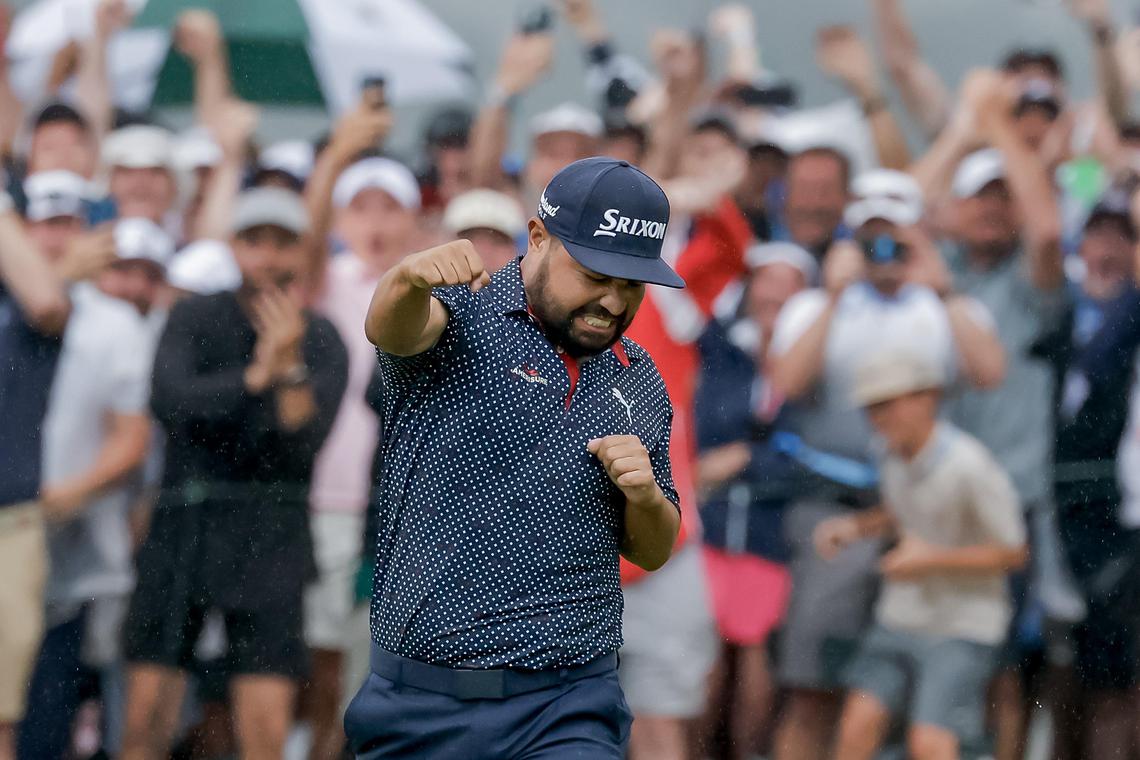
When JJ Spaun stood over a 64-foot birdie putt on the 72nd hole of the 2025 U.S. Open at Oakmont, few could have predicted what would come next. The ball meandered across the slick green, trickling over every contour, picking up speed at the crest, and then—like it had GPS—dropped center cup. Spaun dropped his putter, raised his arms, and the crowd erupted. With that single stroke, he claimed his first major title in one of the most dramatic finishes in U.S. Open history.
But how does Spaun’s putt stack up against other legendary finishes in the tournament’s storied past? Let’s break down some of the most iconic moments and see where this one lands.
1. Payne Stewart – 1999 U.S. Open at Pinehurst
Perhaps the most iconic putt in U.S. Open history came from Payne Stewart, who nailed a 15-footer for par on the 18th to win by one over Phil Mickelson. The pose—fist pump and outstretched leg—has since been immortalized in a statue at Pinehurst. What made it legendary wasn’t just the putt—it was the context: Stewart’s final major before his tragic death just months later.
Verdict: Iconic and emotional. Spaun’s putt was longer, but Stewart’s was more poetic.
2. Tiger Woods – 2008 U.S. Open at Torrey Pines
Woods drained a 12-foot birdie on the 72nd hole to force a playoff with Rocco Mediate—while basically playing on one leg. That tournament went to sudden death after an 18-hole playoff, and Tiger prevailed. This was peak Tiger drama, pain and all.
Verdict: Spaun’s putt was longer, but Tiger’s win was sheer willpower and mystique.
3. Jack Nicklaus – 1972 U.S. Open at Pebble Beach
With a 1-iron shot that hit the flagstick on 17 and a crucial birdie putt on 18, Jack sealed a dominant win. His precision and timing under pressure showed why he’s the GOAT.
Verdict: Not a putt for the win, but a signature finishing statement from Jack. Spaun’s was more electric in terms of pure putter drama.
4. Ben Hogan – 1950 U.S. Open at Merion
Hogan’s 1-iron into the 18th fairway and the par to force a playoff—just 16 months after a near-fatal car crash—remain legendary. He won the playoff and completed one of golf’s great comeback stories.
Verdict: Larger-than-life comeback. Spaun’s putt had more flair, but Hogan’s win was heroic.
5. JJ Spaun – 2025 U.S. Open at Oakmont
Let’s not underestimate what Spaun accomplished. The pressure was immense. He wasn’t the favorite. And on the most treacherous greens in golf, he buried a 64-foot bomb—a putt most players would be happy to lag to within 5 feet—to win the U.S. Open outright.
Verdict: For distance, surprise, and drama, Spaun’s putt may be the most shocking winning stroke in U.S. Open history.
Final Thoughts
JJ Spaun may not have the résumé of a Nicklaus or Woods, but for one Sunday afternoon in June 2025, he created a moment that will live in golf lore forever. Spaun’s putt was longer than Stewart’s, more unexpected than Tiger’s, and more dramatic than any final-hole finish in recent memory.
In terms of pure clutch putting? It might just be the greatest walk-off in U.S. Open history.
-

 Product Review6 years ago
Product Review6 years agoThe Perfect Practice Putting Mat Review by Jason Tenzer
-

 Blog4 years ago
Blog4 years agoLoophole Rule Offers PGA Tour Pros a Mulligan
-

 Blog4 years ago
Blog4 years ago2021 Buyer’s Guide: The Top 10 Value Golf Balls For Distance & Feel
-

 Blog4 years ago
Blog4 years agoGolf Marriage Counselor
-

 Blog6 years ago
Blog6 years ago9 Biggest Chokes Of The Past Decade
-

 Product Review6 years ago
Product Review6 years agoTHE ADJUSTABLE IRONS: WALKING STICKS GOLF CLUBS
-

 Blog4 years ago
Blog4 years agoWhat Your Golf Clubs Say About You
-

 Equipment6 years ago
Equipment6 years agoOHK Sports Interview by Jason Tenzer





